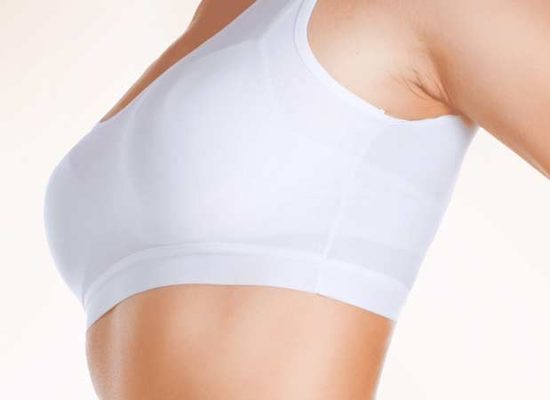Scar revision surgery in Malad West, Mumbai reduces the scar so that it is more uniform with your skin tone and surrounding texture.
Scars are visible signs that remain after a wound is healed, being an inevitable result of injury or surgery, and their development can be unpredictable. Poor healing can contribute to the emergence of unfavorable scars. Even a wound that heals well can result in precarious scarring in its appearance.
Your treatment options vary by type and degree of healing and may include:
- Simple topical treatments;
- Minimally invasive procedures;
- Surgical review with advanced wound closure techniques.
Scar revision surgery in Goregaon West, Mumbai is intended to minimize the scar so that it is more uniform with your skin tone and surrounding texture. Although the correction of the scar provides a more pleasant aesthetic result or improve a scar that has poor healing, a scar cannot be completely erased.
What is scar revision?
Scar revision in Malad West is plastic surgery performed to improve the condition or appearance of a scar on any part of the body. The different types of scar include:
Discoloration, surface irregularities and other more subtle scars may be aesthetically improved by surgery or other treatments recommended by the best plastic surgeon in Malad West. These types of scars do not impair function or cause physical discomfort and include acne scars, as well as scars resulting from minor injuries and previous surgical incisions.
Hypertrophic scars are thick clusters of scar tissue that develop directly at the site of healing. These scars are most often tall, red and/or uncomfortable, and can become larger over time. They can be hyperpigmented (darker in color) or hypopigmented (lighter in color).
Keloids are larger than hypertrophic scars. These scars can be painful or itchy and can also wrinkle. They extend beyond the edges of an initial wound or incision, and may occur anywhere in the body, but develop most commonly where there is little underlying fat tissue, such as on the face, neck, ears, chest, and shoulders.
Contractures are scars that restrict movement due to the joint of the skin and underlying tissue during healing. Contractures occur when there is a large amount of tissue loss, for example, after a burn. Contractures can also form where the wound joins the joint, restricting the movement of the fingers, elbows, knees and neck.
The type of scar you have will determine the proper techniques that the plastic surgeon in Malad will use to soften the scar.
Is the procedure indicated for me?
Scar revision surgery in Goregaon West, Mumbai is a highly individualized procedure and you should do it for yourself, not to satisfy someone else’s desires or to adapt to any kind of ideal image.
The procedure can be performed on people of any age and is a good option for you if:
- You feel bothered to have a scar on any part of your body;
- You are physically healthy;
- You do not smoke;
- You have positive perspective and realistic expectations about the procedure;
- You do not have active acne or other skin diseases in the area to be treated.

Surgical procedure
Step 1 – Anesthesia
Medications are administered for your comfort during the surgical procedure. Options include intravenous sedation and general anaesthesia. Plastic surgeon in Mumbai will recommend the best option for you.
Step 2 – Treatment
The degree of improvement that can be obtained with scar correction will depend on the severity, type, size and location of the scar. In some cases, a single technique can provide significant improvement. However, the best plastic surgeon in Goregaon may recommend a combination of correction techniques to achieve the best results.
Topical treatments such as gels, ribbons, or external compression can help close wounds and heal or decrease the skin’s ability to produce irregular pigment. These products can be used for the treatment of existing superficial scars and discoloration, and to aid in the healing of scar correction procedures.
Injectable treatments are often used to fill reduced scars. Depending on the injectable substance used and the scar conditions, the results can last from three months to several years. Therapy should be repeated to maintain results. One form of injection therapy uses compound-based steroids to reduce collagen formation and can alter the appearance, size and texture of scar tissue.
Surface treatments are most often used for aesthetic improvement of the scar. These methods can smooth surface irregularities and reduce irregular pigmentation. Surface treatments are a controlled means of mechanical removal of the upper layers of the skin or alteration of the nature of the tissue. These treatment options include:
- Dermabrasion: Helps refine the surface layers of the skin by means of a controlled method of surgical scraping.
- Laser or light therapy: Causes changes in the surface of the skin, allowing new and healthy skin to form at the site of the scar.
- Chemical peeling solutions: Penetrate the surface of the skin to smooth out irregularities in texture and color.
- Skin whitening agents: Medicinal products applied topically to lighten the skin.
Step 3
Sometimes, for deeper scars, multiple incisions may be required to surgically remove the scar.
Step 4 – Closing incisions Some
scars require layered closure. Layered closure is often used where the incision extends to the tissue, below the surface of the skin, or in areas with a high degree of movement. The first step, or layer, requires subcutaneous closure (below the surface of the skin) with absorbable or non-removable sutures.
Advanced scar revision surgery in Malad West, Mumbai includes closing the flap to reposition a scar so that it is less visible, or to improve flexibility where contracture restricts movement.
Pharmaceutical tissue substitutes can be used if healthy tissue is not present to close a scar excision, and is most likely with the correction of severe burn scars.
Tissue expansion may be a substitute procedure for skin grafts. In this procedure, an inflatable balloon, called a tissue expander, is placed under the skin near the site of the scar.
Over time, the balloon is filled slowly with sterile solution to expand the healthy skin area.
Once the skin has been sufficiently stretched, the expander and scar are removed and the stretched skin is moved to replace the scar tissue. This process may involve several stages or surgical procedures in order to achieve the final results.
Postoperative recovery
The initial phase of healing may present localized swelling, discoloration, or discomfort and may take 1 to 2 weeks. Healing will continue for several weeks. With dermabrasion, chemical peeling, or laser resurfacing, the conditions in the treated areas will be the same, in addition to sensitivity in general.































